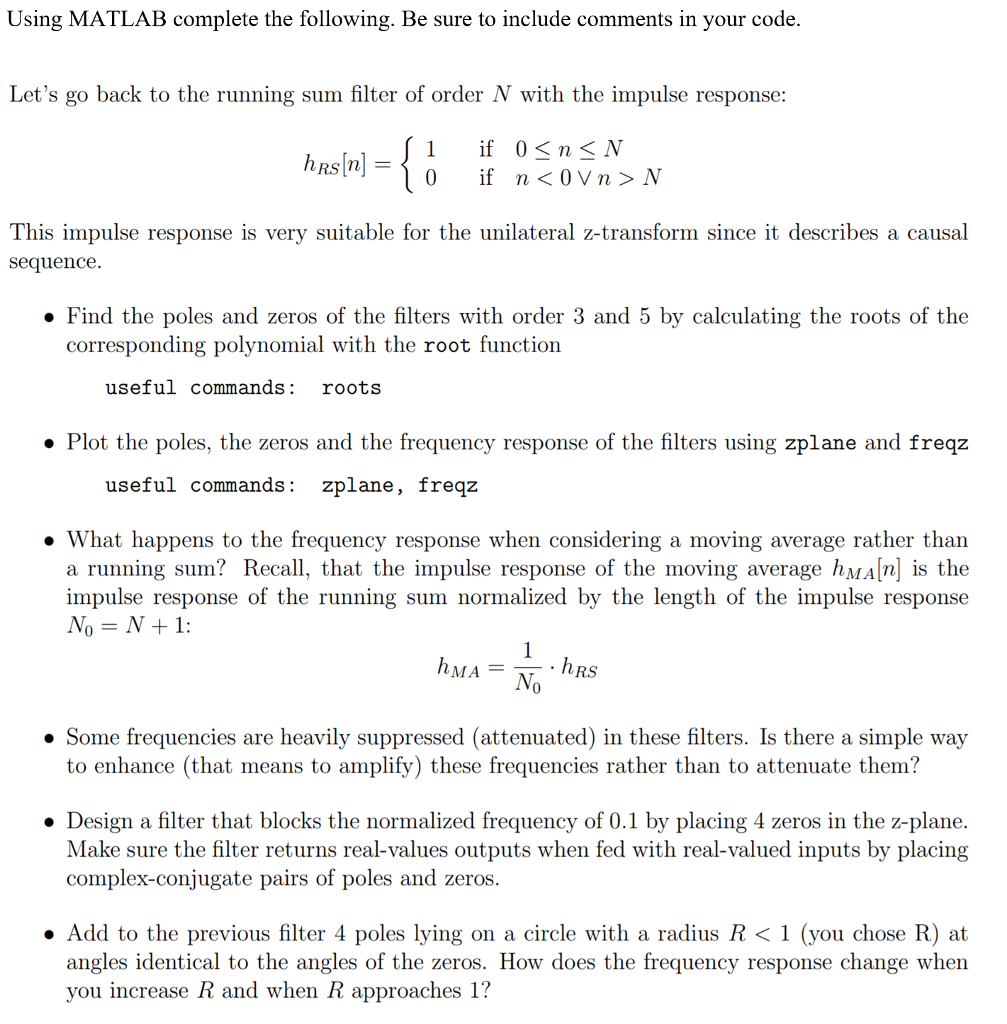
Using MATLAB complete the following. Be sure to include comments in your code. Let's go back to the running sum filter of order N with the impulse response: if 0nN 0 if nN This impulse response is very suitable for the unilateral z-transform since it describes a causal sequence Find the poles and zeros of the filters with order 3 and 5 by calculating the roots of the corresponding polynomial with the root function usefulcommands: roots Plot the poles, the zeros and the frequency response of the filters using zplane and freqz useful commands: zplane, freqz . What happens to the frequency response when considering a moving average rather than a running sum? Recall, that the impulse response of the moving average hMA] is the mpulse response of the running sum normalized by the length of the impulse response No=N+1: MA RS 0 . Some frequencies are heavily suppressed (attenuated) in these filters. Is there a simple way to enhance (that means to amplify) these frequencies rather than to attenuate them? . Design a filter that blocks the normalized frequency of 0.1 by placing 4 zeros in the z-plane. Make sure the filter returns real-values outputs when fed with real-valued inputs by placing complex-conjugate pairs of poles and zeros Add to the previous filter 4 poles lying on a circle with a radius RN This impulse response is very suitable for the unilateral z-transform since it describes a causal sequence Find the poles and zeros of the filters with order 3 and 5 by calculating the roots of the corresponding polynomial with the root function usefulcommands: roots Plot the poles, the zeros and the frequency response of the filters using zplane and freqz useful commands: zplane, freqz . What happens to the frequency response when considering a moving average rather than a running sum? Recall, that the impulse response of the moving average hMA] is the mpulse response of the running sum normalized by the length of the impulse response No=N+1: MA RS 0 . Some frequencies are heavily suppressed (attenuated) in these filters. Is there a simple way to enhance (that means to amplify) these frequencies rather than to attenuate them? . Design a filter that blocks the normalized frequency of 0.1 by placing 4 zeros in the z-plane. Make sure the filter returns real-values outputs when fed with real-valued inputs by placing complex-conjugate pairs of poles and zeros Add to the previous filter 4 poles lying on a circle with a radius R







